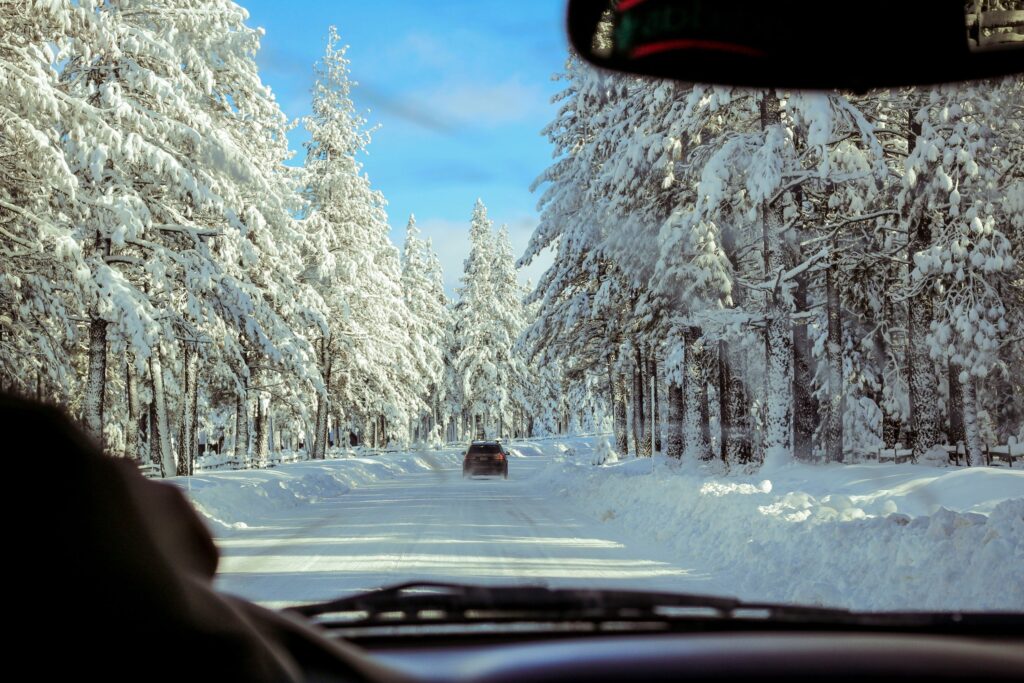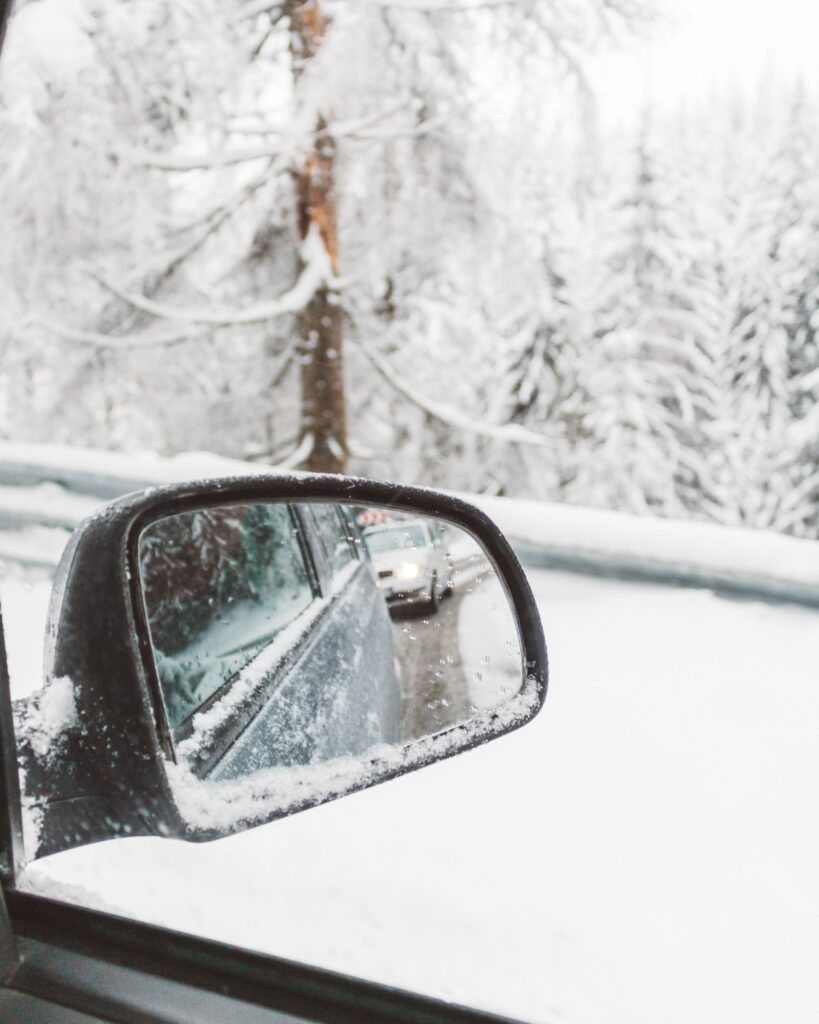The next few months in Canada transform the landscape into a breathtaking winter wonderland. However, with the beauty comes the challenge of navigating winter driving on icy roads with heavy snowfall and frigid temperatures. In this guide, we’ll give you essential tips and insights to ensure a safe and smooth journey on Canadian roads during the winter season.
Download Canoo this winter and explore over 2,000 experiences across Canada! Take an incredible and magical trip, but make sure you’re following our tips below to stay safe while on the roads.
Choosing the Right Winter Tires
Snow tires are essential for winter driving in Canada, providing enhanced traction on slippery roads. These specialized tires are designed to perform optimally in cold temperatures and on snow-covered or icy roads. Snow tires improve traction and reduce the risk of skidding or sliding. Consider brands like WinterGrip and ArcticTread that are well-known for their reliability in Canadian winter conditions.
Safe Winter Driving Practices
Mastering safe winter driving practices will help you get to and from your destinations with ease and confidence. Tip #1: Reducing your speed is crucial when driving in slippery conditions. Give yourself more than enough time to react to unexpected hazards, and remember that posted speed limits are meant for ideal conditions, not dangerous ones. So, slow down to ensure better control of your vehicle.
You should also maintain a safe distance behind other cars for larger braking distances on icy roads. This extra space provides a buffer, reducing the risk of collisions.
Make sure to avoid sudden movements such as sharp turns or abrupt acceleration and braking. Smooth, gradual maneuvers help maintain control on icy surfaces, minimizing the likelihood of your car sliding out of control.

Preventative Vehicle Maintenance
From checking your battery to ensuring proper fluid levels, proactive maintenance is the key to a reliable vehicle.
Cold temperatures can take a toll on your car battery. Ensure your battery is in good condition by having it tested before winter arrives. A fully charged and well-maintained battery will lead to reliable starts in the colder temperatures.
Winter driving requires effective braking. Have your brakes inspected, including brake pads and rotors. A brake system in top condition ensures responsive and reliable stopping power in slippery conditions.
Don’t forget to check all fluid levels, including oil, transmission fluid, and windshield washer fluid. Ensure your antifreeze is at the right level to prevent freezing. Properly maintained fluids contribute to the overall health of your vehicle during winter.
Emergency Preparedness on the Road
No one wants to experience a breakdown or emergency on a cold winter day. Collect all the essential items in your car, just in case.
Winter Survival Kit Essentials
- Blankets and Warm Clothing: Pack extra blankets, thermal layers, and winter clothing to keep warm in case of extended waits or emergencies.
- Non-Perishable Food and Water: Keep snacks and bottled water to sustain yourself during unexpected delays.
- Emergency First Aid Kit: A compact first-aid kit with essential supplies can be invaluable in minor emergencies.
- Flashlight and Batteries: Ensure you have a reliable flashlight with spare batteries for visibility in the dark.
- Multipurpose Tool and Shovel: Include a multipurpose tool, as well as, a compact shovel for snow removal if needed.
Knowing When to Seek Professional Assistance:
- Contact Roadside Assistance: If you have a roadside assistance service, contact them for help with towing, fuel delivery, or mechanical issues.
- Call Emergency Services: In case of a medical emergency or if your safety is at risk, call emergency services for immediate assistance.

The Importance of Staying Informed
Regularly check weather forecasts and road conditions before embarking on a drive during winter. Stay updated on any potential hazards or adverse weather conditions that might affect your route. You can do this by discovering reliable sources for weather forecasts, road conditions, and real-time updates in your areas to ensure you’re well-prepared for your winter journeys.
Embarking on winter journeys in Canada demands a combination of preparation, awareness, and adherence to safe driving practices. With the knowledge gained from this guide, you’re equipped to navigate the frost. Remember, winter driving is not just about reaching your destination; it’s about ensuring a safe and enjoyable journey amidst the enchanting Canadian winter landscape.
Drive safely, stay warm, and revel in the unique beauty of Canadian winters!





